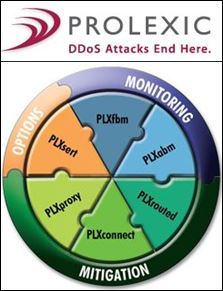Printers, Routers and Other Internet Devices Being Hijacked to Participate in DrDoS Cyber Attacks
April 30, 2013 (PRLEAP.COM) Business News
Hollywood, FL – Prolexic, the global leader in Distributed Denial of Service (DDoS) protection services, announced today that Distributed Reflection and Amplification Denial of Service (DrDoS) attacks have grown increasingly popular with malicious actors as the number of vulnerable network appliances and servers has grown.While DrDoS attack tactics have been used successfully for more than a decade, their popularity and effectiveness has increased during the past year. Specific DrDoS attacks target IP-based devices – printers, cameras, routers, hubs, sensors and other network devices – to take advantage of inherent vulnerabilities in standard network protocols, coopt the devices, and transform them into malicious bots.
"Protocol reflection attacks are a serious problem, but system administrators can help protect their organization and the Internet community by taking steps to avoid participating in these types of DrDoS attacks," said Stuart Scholly, Prolexic President. "Unfortunately, the protocols were written with functionality, not security, in mind. The Internet used to be a safer place than it is now."
DrDoS attacks using these protocols can be difficult to trace back to the malicious actor because they often involve spoofing, or faking, the origin of the attack.
In the new DrDoS white paper, the Prolexic Security Engineering & Response Team (PLXsert) explains how malicious actors leverage three common network protocols inherent in network servers and devices:
The white paper, second in the DrDoS series, explains the protocol vulnerabilities and how they are used in DDoS attacks. It also identifies actions system administrators can take to reduce, or mitigate, the vulnerability of their network devices and servers.
The SNMP, NTP, CHARGEN Reflection Attacks white paper by PLXsert is available free of charge at http://www.prolexic.com/drdos.
About the Prolexic Security Engineering & Response Team (PLXsert)
PLXsert monitors malicious cyber threats globally and analyzes DDoS attacks using proprietary techniques and equipment. Through data forensics and post attack analysis, PLXsert is able to build a global view of DDoS attacks, which is shared with customers. By identifying the sources and associated attributes of individual attacks, the PLXsert team helps organizations adopt best practices and make more informed, proactive decisions about DDoS threats.
Details of Prolexic's DDoS mitigation activities and insights into the latest tactics, types, targets and origins of global DDoS attacks are provided in quarterly reports published by the company. A complimentary copy of Prolexic's most recent Global DDoS Attack Report is available at http://www.prolexic.com/attackreports.
About Prolexic
Prolexic is the world's largest, most trusted Distributed Denial of Service (DDoS) mitigation provider. Able to absorb the largest and most complex attacks ever launched, Prolexic restores mission-critical Internet-facing infrastructures for global enterprises and government agencies within minutes. Ten of the world's largest banks and the leading companies in e-Commerce, SaaS, payment processing, travel/hospitality, gaming and other at-risk industries rely on Prolexic to protect their businesses. Founded in 2003 as the world's first in-the-cloud DDoS mitigation platform, Prolexic is headquartered in Hollywood, Florida, and has scrubbing centers located in the Americas, Europe and Asia. To learn more about how Prolexic can stop DDoS attacks and protect your business, please visit http://www.prolexic.com/, follow us on LinkedIn, Facebook, Google+, YouTube, and @Prolexic on Twitter.
Contact Information
Michael E. Donner, SVP, Chief Marketing Officer
Prolexic Technologies Inc
1 (954) 620 6017
Contact Us
Michael E. Donner, SVP, Chief Marketing Officer
Prolexic Technologies Inc
1 (954) 620 6017
Contact Us


